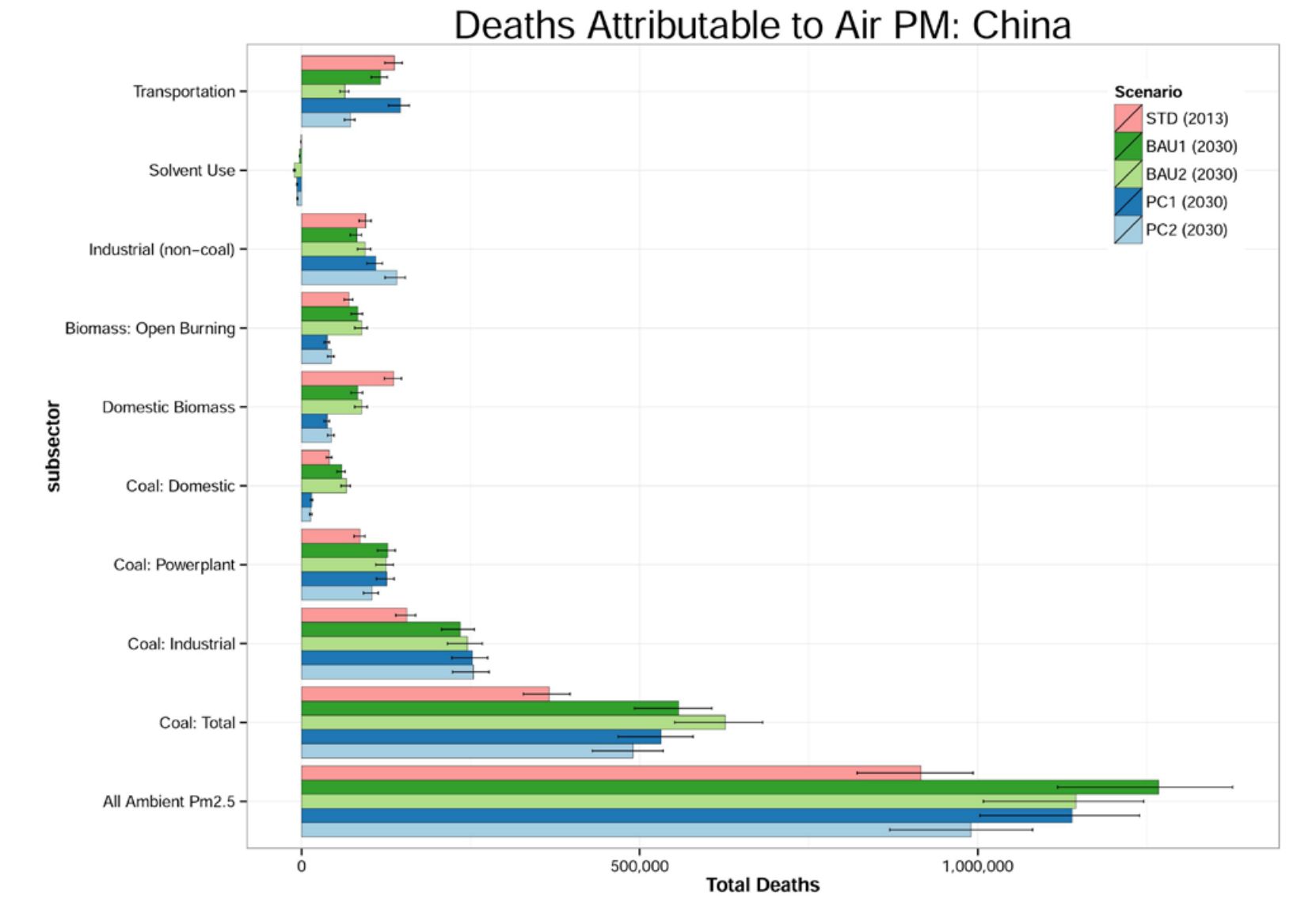Coal combustion is the single largest source of air pollution-related deaths in China as of 2013. But the steady path toward cleaner sources of energy for power production and industrial use may not substantially curb the problem in the coming decades, according to a new study.
There are nearly 1 million deaths annually that are attributable to fine particulate matter in outdoor air pollution in China, according to the research from Tsinghua University and Boston-based Health Effects Institute. About one-third of those are from burning coal across all sectors, including in homes.
But even with China's goals of limiting coal use, particularly the dirtiest forms, the absolute number of deaths related to air pollution would still rise through 2030 because of an aging population.
“The takeaway is you really need to reduce air pollution a lot to see the maximum effect on a metric like number of deaths in a given year,” said Aaron Cohen, a consultant scientist at the Health Effects Institute and professor of global health at the University of Washington.
But real gains are achievable, and in fact are already happening when total numbers are put into context. “When you adjust for these other factors and look at attributable deaths while controlling for population size and aging, then you start to see [that] the rates are declining,” he added.
The finding is not unique to China, although it is most pronounced there. The proportion of deaths due to ambient particulate matter has also been growing in other populous counties including Bangladesh, Brazil, Indonesia and India. Two-thirds of the nearly 3 million deaths annually from outdoor air pollution are in China, India and developing Asia.
The study, which looked at air pollution at a 10-by-10 kilometer grid scale in China using a network of ground-monitoring stations and satellite data, found that it is not just power production and transportation driving the pollution, as it is in more developed nations.

Source: Health Effects Institute
In total, researchers have found outdoor particulate matter is the fifth-leading cause of death in China, followed by household air pollution. In 2013, the particulate matter from burning biomass and coal in homes contributed more to outdoor air pollution in China than coal burned at power plants.
By 2030, the contribution of burning domestic coal and biomass could be a larger contributor to outdoor air pollution than the transportation sector in China, and a continued serious threat to those who breathe it indoors.
The picture painted by the international team of researchers suggest that it is not enough to curb coal use simply at industrial and electric generation sites, although that effort is important. It must come with equal focus on cleaner cooking and heating sources in the residential sector to truly make a difference in broader public health.
Another reason that a multi-pronged effort is needed in China is that there is an aging population in the country, which exacerbates the effect of air pollution, as older people are more susceptible to the risk of particulate matter worsening conditions like heart disease and stroke.
The air is slightly cleaner than it was even a few years ago, however, and the tide may be turning. The rate of death attributable to particulate matter is falling in China, even if the absolute numbers are still rising. In fact, Cohen said the researchers have seen a leveling-off in the early part of this decade, “and we can see it even more now in 2015.” And if peak coal has truly been reached in China, there is reason for optimism.
“We are seeing what you can really interpret as improvements,” said Cohen.



